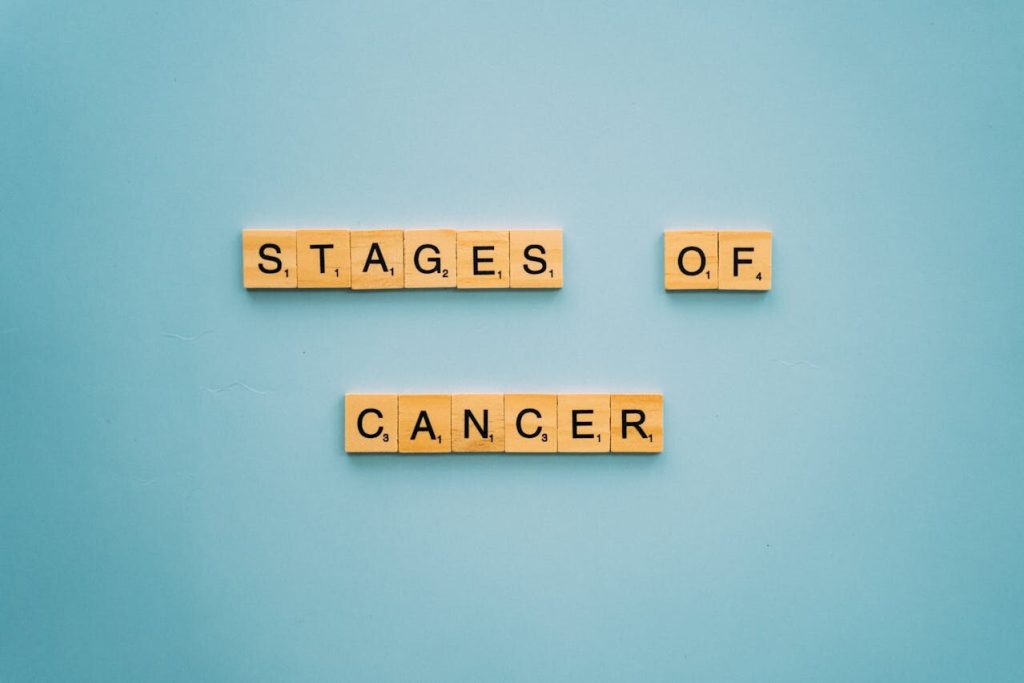For patients undergoing taxol chemotherapy treatment, understanding and managing side effects is crucial to ensuring a successful outcome. Taxol is a potent chemotherapy drug that can produce a range of side effects, both short-term and long-term. These side effects can be managed effectively with proactive care and support, but it’s essential to understand the nature of these effects and how they may manifest on a weekly basis.
From hair loss and neuropathy to weight gain and joint pain, taxol side effects can significantly impact a patient’s quality of life. This comprehensive guide explores the most common side effects of taxol treatment, offering insights into why they occur, how to manage them, and providing practical tips for mitigating symptoms.
Key Takeaways
- Understanding taxol side effects is essential for successful chemotherapy treatment.
- Short-term and long-term side effects can affect quality of life.
- Managing side effects with proactive care and support can alleviate discomfort.
What is Taxol and How Does it Work?
Taxol, also known as paclitaxel, is a chemotherapy drug commonly used to treat various types of cancer. It works by interfering with the normal functioning of cancer cells, preventing them from dividing and growing. Taxol is administered intravenously, usually in a hospital or clinic setting, and is typically given in cycles lasting several weeks.
While taxol is an effective cancer treatment, it can also cause a range of side effects. These side effects may vary from person to person and can be short-term or long-term, impacting a patient’s quality of life during and after treatment.
Common side effects of taxol chemotherapy may include:
- Nausea and vomiting
- Hair loss
- Neuropathy
- Weight gain
- Joint pain
- Constipation
- Fatigue
It is important for patients to understand these side effects and work closely with their healthcare team to manage them effectively.
Exploring Taxol Side Effects on a Weekly Basis
Taxol is known to cause a range of side effects, which can manifest differently for each individual. Understanding these effects and how they may emerge on a weekly basis is crucial for managing treatment and optimizing quality of life.
| Short-Term Side Effects | Long-Term Side Effects |
|---|---|
|
|
In the first week of treatment, patients may experience nausea and vomiting, hair loss, and reduced appetite. Fatigue and joint pain may also become more pronounced during this week, as the body adjusts to treatment.
As treatment progresses, patients may develop peripheral neuropathy, which can cause tingling and numbness in the hands and feet. Weight gain may also occur as a result of changes in metabolism and hormone levels. Long-term fatigue, cognitive changes, and an increased risk of infection are among the potential long-term side effects of treatment.
Regular communication with healthcare providers is essential for managing these side effects and ensuring optimal care. Patients should discuss any concerns or changes in symptoms with their healthcare team, who can offer guidance and support throughout treatment.
Taxol Side Effects: Hair Loss
Hair loss is a common side effect of taxol treatment and can be distressing for patients. Taxol chemotherapy attacks rapidly dividing cancer cells by preventing them from dividing and spreading, but it can also affect rapidly dividing healthy cells in the body, including hair follicles. The degree of hair loss can vary from mild thinning to complete baldness, and it can occur on the scalp, eyebrows, eyelashes, and other parts of the body.
While hair loss can be difficult to manage emotionally, there are strategies that can help. Patients can consider using a scalp cooling system during chemotherapy sessions, which can reduce hair loss by decreasing blood flow to the scalp. Other tips include using gentle hair care products, avoiding tight hairstyles or hair accessories that can pull on the scalp, and avoiding excessive heat styling or hair dye. Patients may want to consider wearing a wig, scarf, or hat to cover their head, and involving family and friends in the process can help ease the emotional impact of hair loss.
It’s important to remember that hair loss is a temporary side effect and that hair will typically grow back after treatment is completed. However, the regrowth process can take several months and may lead to changes in hair texture or color. Patients should consult with their healthcare provider for personalized guidance on managing hair loss during taxol treatment.
Taxol Side Effects: Neuropathy
Taxol treatment can cause neuropathy, a nerve damage condition that affects the peripheral nervous system, particularly in the hands and feet. Symptoms of neuropathy can include numbness, tingling, burning, and weakness.
Neuropathy can be a distressing experience for patients and can impact their ability to perform daily activities. It is important to be proactive in managing the progression of neuropathy to prevent permanent damage to the nerves.
Healthcare providers may suggest medications to help alleviate the symptoms of neuropathy, such as anticonvulsants or antidepressants. Additionally, maintaining a healthy lifestyle by eating a balanced diet and engaging in regular exercise can also help mitigate the impact of neuropathy.
It is essential to communicate any symptoms of neuropathy with healthcare providers to address them effectively and efficiently. They may suggest additional treatments such as physical therapy or acupuncture.
Taxol Side Effects: Weight Gain
Weight gain is a possible side effect of taxol chemotherapy, and it can be distressing for some patients. The underlying causes of weight gain during treatment are not fully understood, but it is thought to be a combination of factors, including hormonal changes, decreased physical activity, and changes in metabolism.
Managing weight gain during taxol treatment requires a multifaceted approach. Patients are advised to prioritize healthy eating habits, including a balanced diet with plenty of fruits, vegetables, and lean protein sources. They may also benefit from working with a registered dietitian to develop a personalized nutrition plan that meets their specific needs and goals. In addition, regular exercise can help to maintain or even increase muscle mass, support cardiovascular health, and improve mood.
It’s important to note that weight gain during taxol treatment is not always preventable, and it’s not a sign of failure by the patient. Rather, it’s a common occurrence that can be managed with proactive care and support. Talking to a healthcare provider about concerns related to weight gain is an important first step, as they can provide guidance and recommend additional resources as needed.
Taxol Side Effects: Nausea
Nausea is one of the most commonly experienced side effects of taxol treatment. It can be mild or severe, and it may occur at any time during the treatment period. Nausea can have a significant impact on a patient’s quality of life, making it difficult to eat, sleep, or perform daily activities.
Managing nausea is crucial for patients undergoing taxol treatment. There are several strategies that may help alleviate nausea symptoms, such as:
- Eating small, frequent meals throughout the day instead of large meals
- Avoiding spicy, greasy, or strong-smelling foods that may trigger nausea
- Drinking plenty of fluids to stay hydrated, but avoiding large volumes at once
- Trying relaxation techniques such as deep breathing or guided imagery
- Using medication prescribed by a healthcare provider, such as anti-nausea drugs or steroids
It is also essential to communicate with healthcare providers about nausea symptoms during taxol treatment. They may be able to adjust the dosage or suggest alternative treatments to alleviate nausea. Patients should also report any vomiting or signs of dehydration promptly.
“Managing nausea is crucial for patients undergoing taxol treatment.”
Taxol Side Effects: Fatigue
Fatigue is a significant side effect experienced by many patients undergoing taxol treatment. This exhaustion can be overwhelming and can impact daily life, making it challenging to maintain activities and responsibilities.
To manage fatigue, patients may need to prioritize rest, incorporating short naps throughout the day and adjusting sleep schedules. Exercise can also be beneficial, as it can help increase energy levels and reduce stress. However, it is recommended to consult with a healthcare provider before starting any physical activity.
Patients should also communicate openly with their healthcare team about their fatigue levels to ensure that they can provide the necessary support and make adjustments to their treatment plan if required. This can include adjusting medication dosages, scheduling treatments to minimize the impact of fatigue or considering alternative treatments that may have fewer side effects.
Other strategies to manage fatigue include proper hydration, maintaining a healthy diet, and incorporating stress-reducing activities like yoga or meditation. It is essential to remember that fatigue is a common side effect of taxol treatment and that patients should not feel as though they need to struggle alone.
Taxol Side Effects: Joint Pain
Joint pain is a potential side effect of taxol treatment that can affect patients’ quality of life. Taxol can cause inflammation in the joints, leading to discomfort and reduced mobility.
To manage joint pain, patients should communicate openly with their healthcare team and report any symptoms that arise. Over-the-counter pain medications or anti-inflammatory drugs may be recommended to alleviate discomfort.
In addition, gentle exercise and stretching can help relieve joint pain and stiffness. Patients should consult their healthcare providers before beginning any new exercise regimen. Wearing supportive shoes and using assistive devices like braces or canes may also provide relief.
It is essential to communicate effectively with healthcare providers about joint pain to determine the best course of action for managing this side effect of taxol treatment.
Taxol Side Effects: Constipation
Constipation is a possible side effect of taxol treatment, and it can be uncomfortable for patients. There are several ways to manage and alleviate constipation symptoms:
- Drink plenty of water and fluids to stay hydrated.
- Incorporate fiber-rich foods in your diet, such as fruits, vegetables, and whole grains.
- Avoid consuming large amounts of dairy products, red meat, and processed foods.
- Exercise regularly to stimulate bowel movements.
- Use laxatives or stool softeners only under the guidance of your healthcare provider.
It’s important to communicate any constipation symptoms and concerns with your healthcare provider to ensure proactive management and prevention. They may recommend additional interventions or medications to alleviate symptoms.
Holistic Cancer Care at the Cancer Center for Healing
The Cancer Center for Healing, located in Irvine, CA, takes a comprehensive approach to cancer care. Led by Dr. Leigh Erin Connealy, a renowned integrative oncologist, the center offers personalized treatment modalities that prioritize holistic wellness and patient empowerment.
Dr. Connealy and her team recognize that cancer affects more than just the physical body, and therefore, offer a range of services that address the emotional and spiritual needs of patients as well. The center’s integrative approach combines conventional cancer treatments with evidence-based complementary therapies, such as nutrition counseling, acupuncture, meditation, and more.
| Services Offered at the Cancer Center for Healing |
|---|
| Cancer screenings and diagnostic testing |
| Conventional cancer treatments, such as chemotherapy and radiation therapy |
| Integrative cancer therapies, such as acupuncture, nutritional counseling, and IV therapy |
| Emotional and mental health support |
| Spiritual counseling and meditation |
| Genetic testing and counseling |
| Detoxification and healing modalities |
The Cancer Center for Healing also emphasizes the importance of patient education and empowerment. Dr. Connealy and her staff are dedicated to equipping patients with the knowledge and tools needed to take an active role in their cancer care journey.
Dr. Leigh Erin Connealy
Dr. Leigh Erin Connealy is a board-certified medical doctor with over three decades of experience in integrative and natural medicine. She is the founder of the Cancer Center for Healing and the author of the book “The Cancer Revolution: A Groundbreaking Program to Reverse and Prevent Cancer.”
Dr. Connealy is passionate about empowering patients to take control of their cancer care and providing them with comprehensive, individualized treatment plans. Her expertise in integrative oncology has made her a sought-after speaker and educator on cancer prevention and treatment.
If you’re interested in seeking support and personalized care at the Cancer Center for Healing, you can schedule a consultation by calling (949) 680-1880. Dr. Connealy and her team are dedicated to helping patients achieve optimal health and wellness, both during and after cancer treatment.
Taxol Side Effects: Seeking Support at the Cancer Center for Healing
While experiencing side effects during taxol treatment may feel overwhelming, patients shouldn’t have to go through this process alone. At the Cancer Center for Healing in Irvine, CA, patients have access to a comprehensive approach towards cancer care, led by Dr. Leigh Erin Connealy and her team of skilled healthcare professionals.
At the Cancer Center for Healing, patients can receive a customized treatment plan that integrates holistic and traditional modalities, tailored to their unique needs and circumstances. Dr. Connealy and her team emphasize proactive care and open communication, working with each patient to manage their symptoms and optimize their quality of life.
Patients can book a consultation at the Cancer Center for Healing by contacting the clinic at (949) 680-1880. Seeking support from Dr. Connealy and her team may help patients alleviate their symptoms and feel more empowered during their taxol treatment.
Taxol Side Effects: A Comprehensive Guide
In conclusion, understanding taxol side effects on a weekly basis is crucial for patients undergoing cancer treatment. While taxol has proven to be an effective chemotherapy drug, it often causes a range of side effects that can impact patients’ quality of life.
Patients experiencing hair loss, neuropathy, weight gain, nausea, fatigue, joint pain, or constipation during taxol treatment should discuss management options with their healthcare providers. It’s essential to take proactive measures to mitigate side effects and maintain overall health and well-being.
Consider Holistic Cancer Care at the Cancer Center for Healing
For those seeking personalized, comprehensive cancer care, the Cancer Center for Healing in Irvine, CA, led by Dr. Leigh Erin Connealy, offers a range of holistic treatment modalities. Patients can schedule a consultation to discuss individualized care plans and receive support throughout their cancer journey.
Remember, seeking support and managing taxol side effects can greatly improve patients’ overall experience during cancer treatment. It’s essential to prioritize self-care and seek the best possible care options for a successful recovery.
FAQ
Q: What is Taxol and How Does it Work?
A: Taxol is a medication used in chemotherapy to treat cancer. It works by interfering with the growth and division of cancer cells, ultimately leading to their destruction.
Q: What are the side effects of Taxol treatment?
A: Taxol treatment can cause a range of side effects, both short-term and long-term. Common side effects include hair loss, neuropathy, weight gain, nausea, fatigue, joint pain, and constipation.
Q: How can I manage hair loss during Taxol treatment?
A: Hair loss is a common side effect of Taxol. To manage it, you can consider wearing a wig, using scarves or hats, or embracing your baldness. It’s important to discuss coping strategies with your healthcare provider as well.
Q: What is Taxol-induced neuropathy and how can I manage it?
A: Taxol-induced neuropathy refers to nerve damage caused by the medication. It can result in symptoms such as tingling, numbness, and pain in the hands and feet. To manage neuropathy, you may try medications, physical therapy, and lifestyle changes.
Q: Is weight gain a common side effect of Taxol treatment?
A: Yes, weight gain can occur during Taxol treatment. You can manage it by maintaining a balanced diet, engaging in regular exercise, and seeking guidance from a nutritionist or dietitian.
Q: How can I alleviate nausea caused by Taxol treatment?
A: Nausea is a common side effect of Taxol. To alleviate it, you can try eating small, frequent meals, avoiding spicy or greasy foods, staying hydrated, and taking prescribed anti-nausea medications.
Q: How can I manage fatigue during Taxol treatment?
A: Fatigue is a significant side effect of Taxol treatment. To manage it, you can prioritize rest, engage in light exercise, practice stress-reducing techniques, and communicate with your healthcare provider for additional support.
Q: What can I do to reduce joint pain caused by Taxol treatment?
A: Joint pain can occur as a side effect of Taxol treatment. You can manage it by maintaining a healthy weight, engaging in gentle exercise, using heat or cold therapy, and discussing pain management options with your healthcare provider.
Q: How can I prevent or alleviate constipation during Taxol treatment?
A: Constipation can be a possible side effect of Taxol treatment. To prevent or alleviate it, you can increase your fiber intake, drink plenty of fluids, exercise regularly, and, if necessary, use over-the-counter remedies or discuss medication options with your healthcare provider.
Q: What is the Cancer Center for Healing and the approach they take towards cancer care?
A: The Cancer Center for Healing located in Irvine, CA, is committed to holistic cancer care. They prioritize an integrative approach, combining conventional treatments with complementary therapies to support patients’ overall well-being.
Q: How can I seek support and personalized care at the Cancer Center for Healing?
A: To seek support and personalized care at the Cancer Center for Healing, you can schedule a consultation with Dr. Leigh Erin Connealy and her team by calling (949) 680-1880. They provide comprehensive care and guidance throughout your cancer journey.






